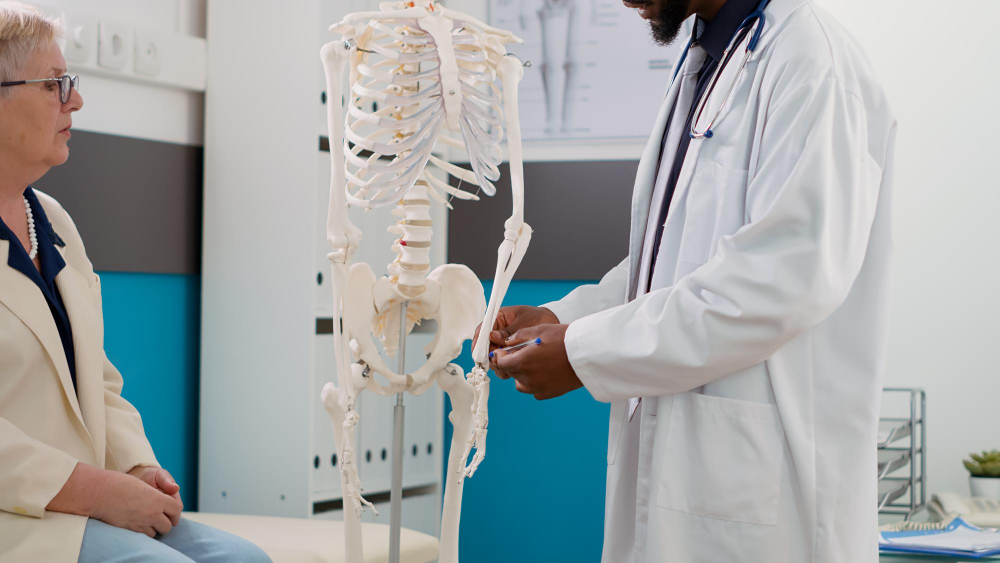골분화 번역(한국어 원본)본 연구는 최근 골대체물로 사용되고 있는 ß-TCP 미립자의 효과를 극대하기 위해서 미립자 표면에 골유도 성장인자인 BMP-2와 Simvastatin을 고정화시켜 상악동막에서 분리한 줄기세포를 표면에 배양한 후 Simvastatin 처리군에서 좀 더 빠른 골 분화 유도가 가능한지 확인하는 것이 목적이다. Simvastatin은 HMG-CoA reductase로서 고지혈증 치료제로 사용되는 약물이다. 또 BMP-2의 대체물질로서 각광 받고 있는 물질로 부각되고 있다. 즉, ß-TCP와 함께 인형 유래 상악동막 줄기세포를 가지고, Simvastatin의 효과를 BMP-2와 비교해보고 또 골 유도 능력에 대해서 Simvastatin의 in-vivo 효과를 관찰 하고자 한다.
실험동물로는 8주령의 수컷 누드 마우스를 사용하였으며, ß-TCP 미립자에 인형 유래 상악동막 줄기세포를 soaking하고, 1 µM Simvastatin과 100 ng/㎖의 rhBMP-2로 처리한 후 실험동물에 이식 후 2,4,8,12주에서 마우스를 희생하였다. 희생하여 얻은 조직은 박절편을 만들어 조직학적인 관찰로서 H&E 염색을 하였고, 면역조직학적인 관찰을 위해 anti-osteocalcin antibody와 anti-human nuclei antibody를 사용해 그 발현 정도를 관찰하였다. 또한, 미네랄화를 관찰하기 위하여 von kossa 염색을 하였고, osteocalcin mRNA분석으로서 RT-PCR로 발현을 관찰하였다.
H&E 분석 결과, Simvastatin과 줄기세포를 처리한 군은 BMP-2를 처리한 군과 비교하였을 때, 8주에서부터 골 형성 정도가 나타났으며, 같은 시점에서 미네랄화가 형성되는 것을 관찰하였다. PCR을 통한 osteocalcin mRNA 분석 역시 8주에서부터 발현이 증가함을 보여주었다. 그러나 면역조직학적인 분석에서 osteocalcin은 오히려 BMP-2 처리군에서 더 강하게 나타나는 것을 관찰 할 수 있었다.
결론적으로 Simvastatin은 그 자체로서 골 형성을 이루는 것보다, 줄기세포에 영향을 주어 골 분화를 유도하는 것으로 확인 할 수 있었다. BMP-2와 비교하여 보았을 때도 Simvastatin은 BMP-2와 같은 맥락으로 세포를 골 유도화 시키며, 발현 정도도 BMP-2와 비교하여 보아도 비슷하게 나타나는 것을 확인할 수 있었던 것으로 보아, Simvastatin은 미래에 BMP-2를 대체하는 물질로서 가능함을 나타내 주었다 |
골분화 번역(영어 번역본)The objective of this study is to verify whether it is possible to induce faster osteogenic differentiation for the simvastatin treated group, after cultivating the stem cell that had been isolated at the sinus moucsa by fixing BMP-2 and simvastatin – which are growth factor for bone regeneration on the surface of corpuscle – in order to maximize the effects of ß-TCP corpuscle that had recently been used as the ostegenic substitute. Simvastatin is HMG-CoA reductase, and it is a drug used to treat hyperlipidemia. In addition, it is being noted as a substitute for BMP-2. That is, in this study, we will observe the in-vivo effects of Simvastatin in regards to bone regeneration and compare Simvastatin with BMP-2 using nucleolar derived sinus moucsa stem cell along with ß-TCP.
As for the animal used for the experiment, approximately 8 weeks old male nude mouse was used. The nucleolar derived sinus moucsa stem cell was soaked in the ß-TCP corpuscle, and after being treated with 1 µM Simvastatin and 100 ng/㎖ of rhBMP-2 – it was then transplanted to the experiment mouse subjects. And at 2nd, 4th, 8th and 12th week, the mice were killed respectively. The tissue samples obtained from the dead mice were sectioned and H&E stained in order to carry out the histological observation – and in order to perform immunity histology observation, the level of generation was observed after applying the anti-osteocalcin antibody and anti-human nuclei antibody. Also, in order to observe mineralization, von kossa stain was applied, and as osteocalcin mRNA analysis, its effects were observed using RT-PCR.
The H&E analysis showed that the group treated with Simvastatin and the stem cell, in comparison with the BMP-2 treated group – the bone regeneration was observed from 8th week. Also the mineralization was observed at the same point of time. The osteocalcin mRNA analysis through PCR also showed an increase from the 8th week. However, in terms of immunity histological analysis, the osteocalcin showed stronger generation at the BMP-2 treated group.
In conclusion, it was confirmed that Simvastatin influences the stem cell to induce osteogenic differentiation – rather than it in itself forming the bone generation. Even when compared to BMP-2, Simvastatin induces bone generation in a similar way as BMP-2, and the level of generation was also similar to BMP-2. So it was shown that Simvastatin has the potential to substitute BMP-2 in the future. |
